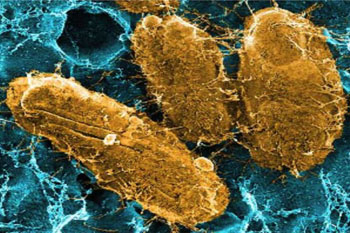Potential Vaccine Prevents Chronic Urinary Tract Infections
By LabMedica International staff writers
Posted on 04 Oct 2016
A team of molecular microbiologists has developed a potential vaccine to prevent acute Escherichia coli urinary tract infections (UTIs) from becoming chronic.Posted on 04 Oct 2016
About 80% of UTIs are caused by uropathogenic E. coli (UPEC). Acute UTIs are characterized by frequent painful urination and abdominal or back pain and typically are treated with antibiotics. Chronic infections allow a pool of bacteria to survive in the bladder and possibly spread to the kidneys or the bloodstream, where they can cause severe disease.

Image: Chronic urinary tract infections caused by E. coli in mice were cured by vaccination that prevented a key binding protein from attaching to the bladder (Photo courtesy of Scott Hultgren and John Heuser, Washington University School of Medicine).
UPEC express CUP pili, which are extracellular fibers tipped with adhesion proteins that bind mucosal surfaces of the urinary tract. Type 1 pili are necessary in the early stages of infection, while a second pilus, called Fml, is encoded by genes similar to those responsible for the type 1 pilus but whose function has not been known.
Investigators at Washington University School of Medicine (St. Louis, MO, USA) genetically engineered a strain of E.coli to lack the gene for the FmlH protein, which is located at the tip of Fml pili and enable the pili to attach to the bladder.
The investigators reported in the September 22, 2016, online edition of the journal Cell Host & Microbe that deletion of FmlH had no effect on UPEC virulence in an acute mouse model of cystitis. However, FmlH provided a fitness advantage during chronic cystitis, which was manifested as persistent bacteriuria, high bladder bacterial burdens, and chronic inflammation. In situ binding confirmed that FmlH bound avidly to the inflamed, but not the naive bladder.
Overall, E. coli lacking FmlH were less likely to establish chronic infections in mice than bacteria with the intact protein. In the initial phase of acute infection, the two strains multiplied to similar levels. However, by the end of the fourth week, the bacteria without FmlH were 1,000 times less numerous in the bladder and 100 times less numerous in the kidneys than the bacteria with the protein.
Vaccination with purified FmlH protein significantly protected mice from developing chronic cystitis following infection with the wild type E. coli.
“Our findings reveal how bacteria have evolved a mechanism to colonize the bladder in order to persist and cause UTIs, and our vaccination study suggests that inhibiting this mechanism could be part of a viable approach to treating or preventing these infections,” said senior author Dr. Scott Hultgren, professor of molecular microbiology at Washington University School of Medicine.
Related Links:
Washington University School of Medicine







 assay.jpg)






